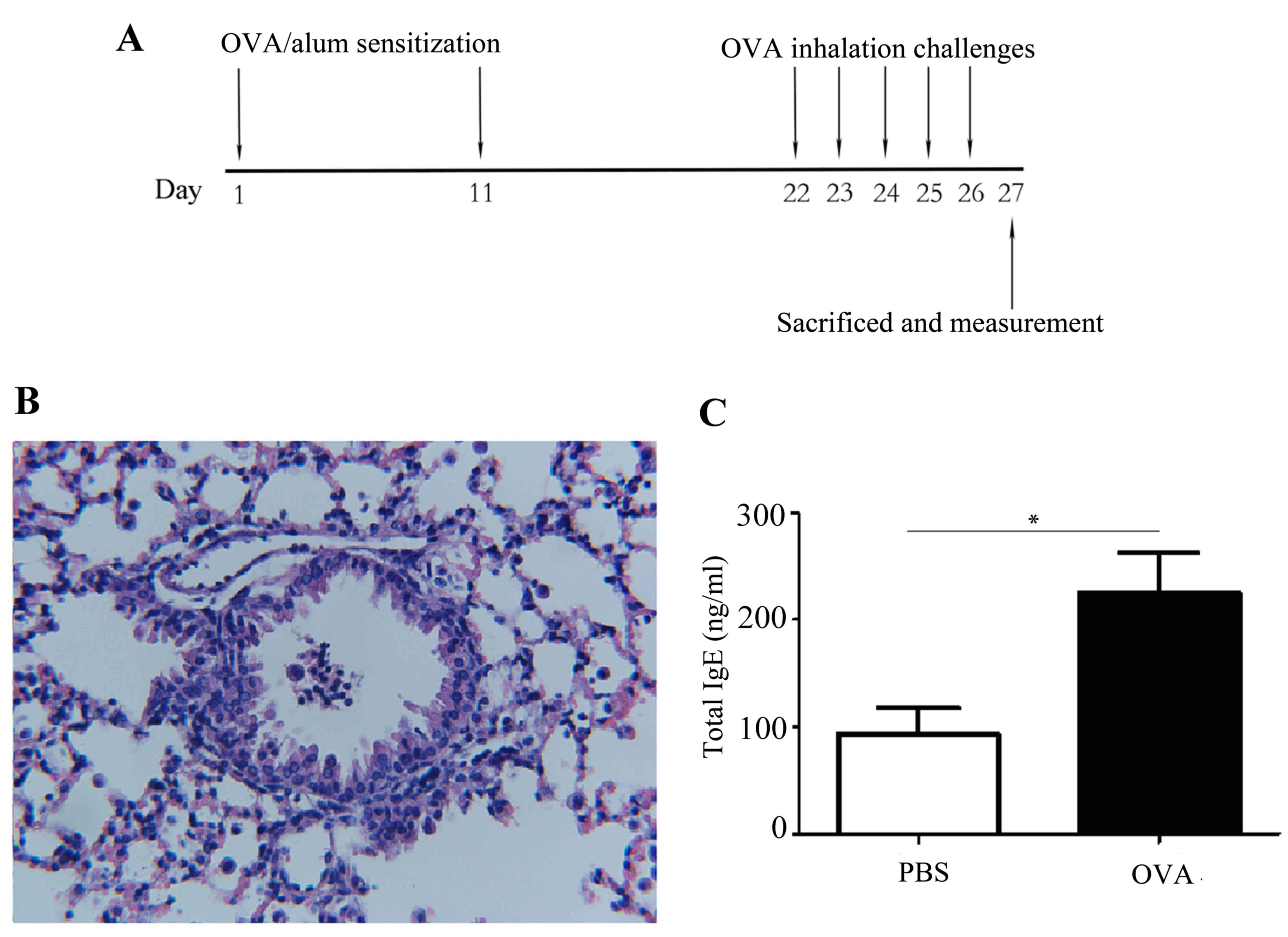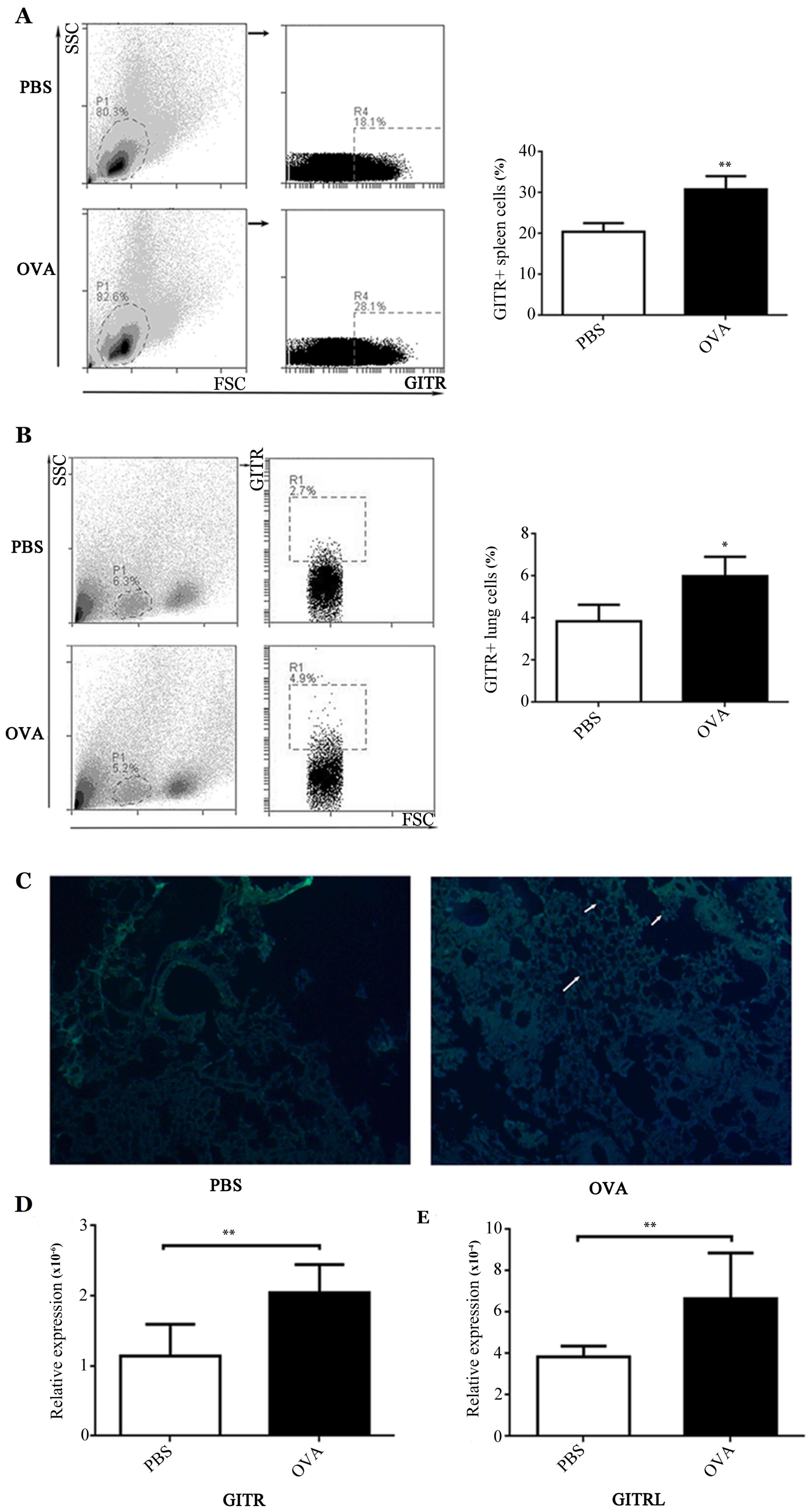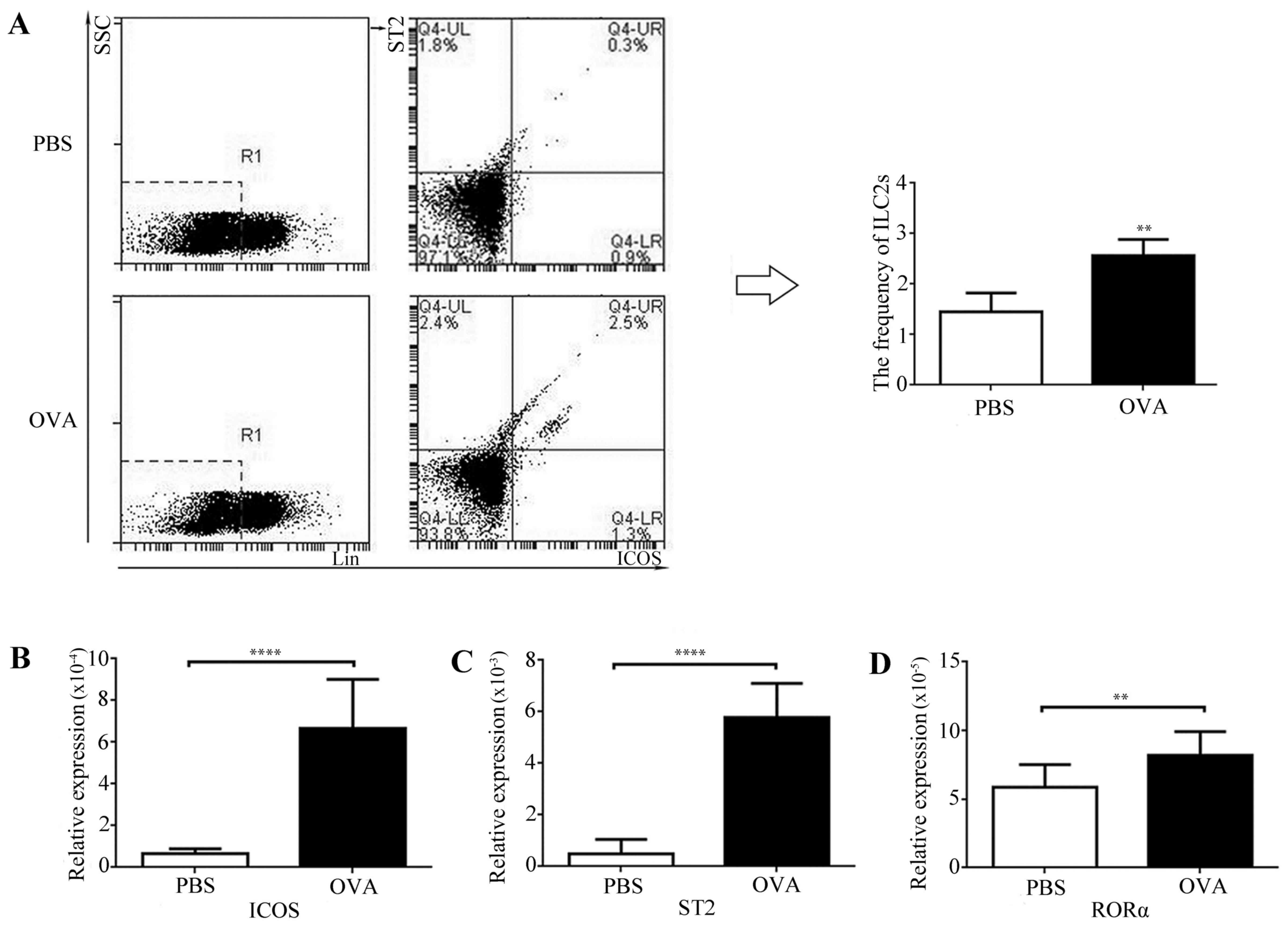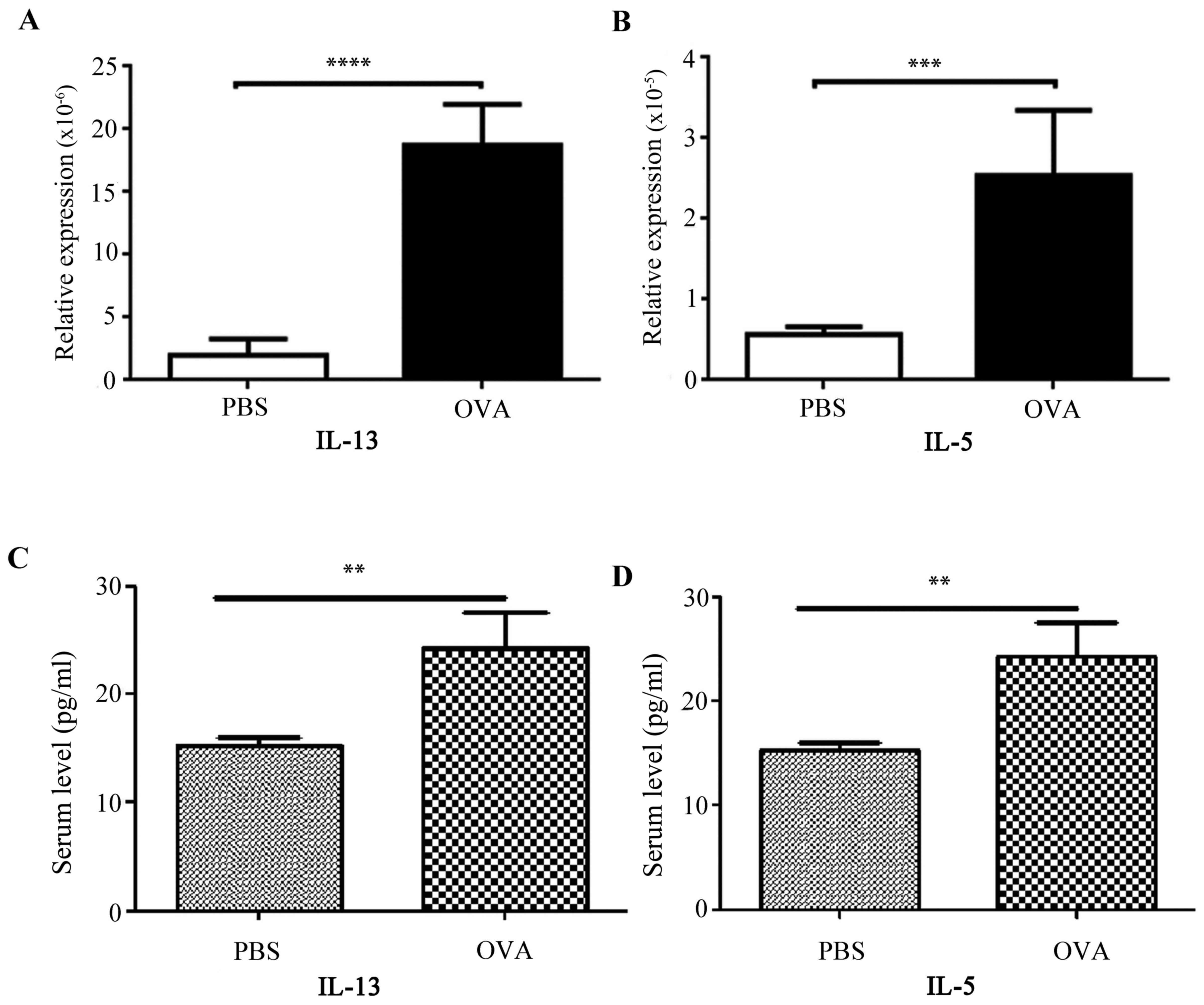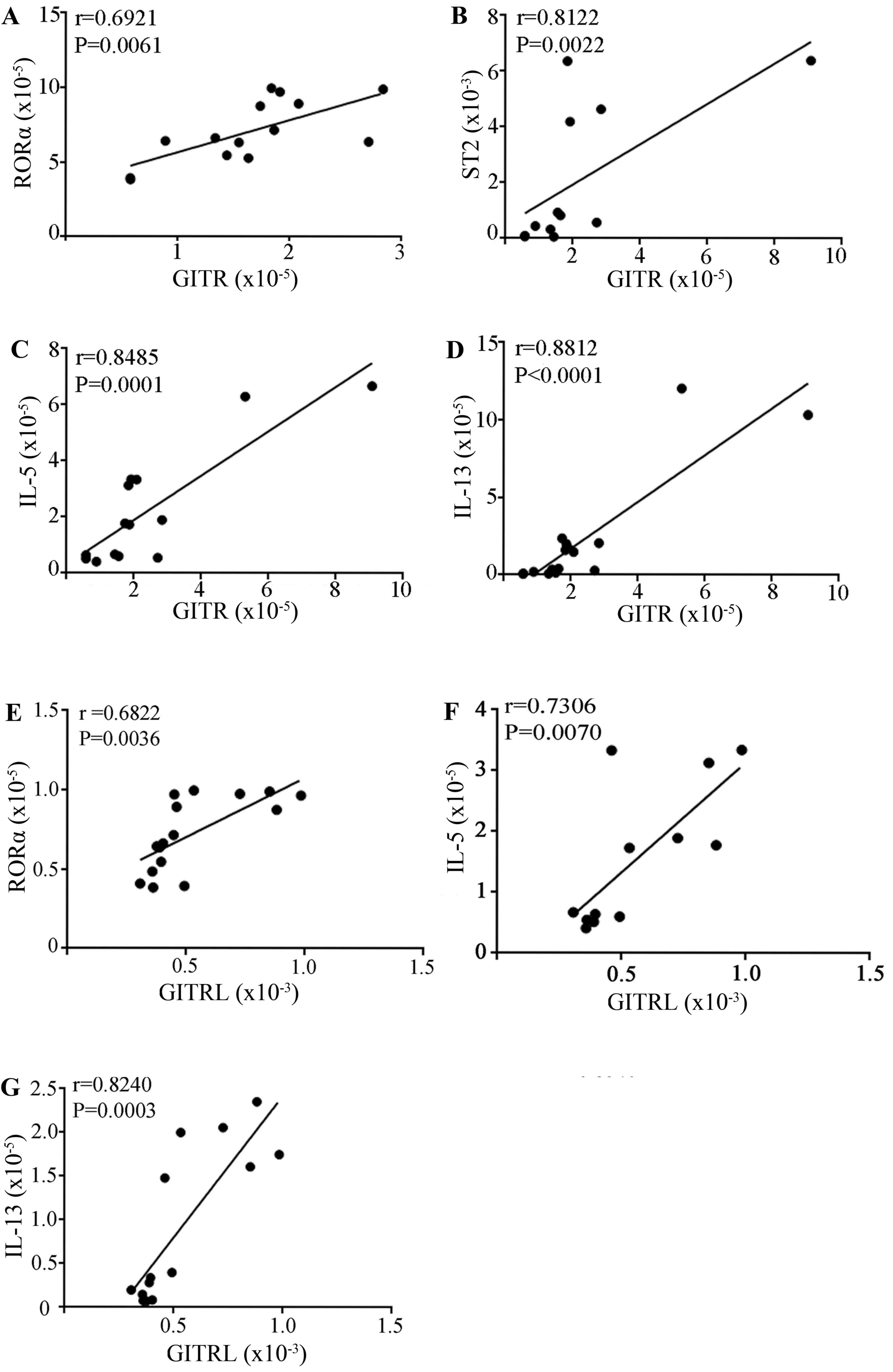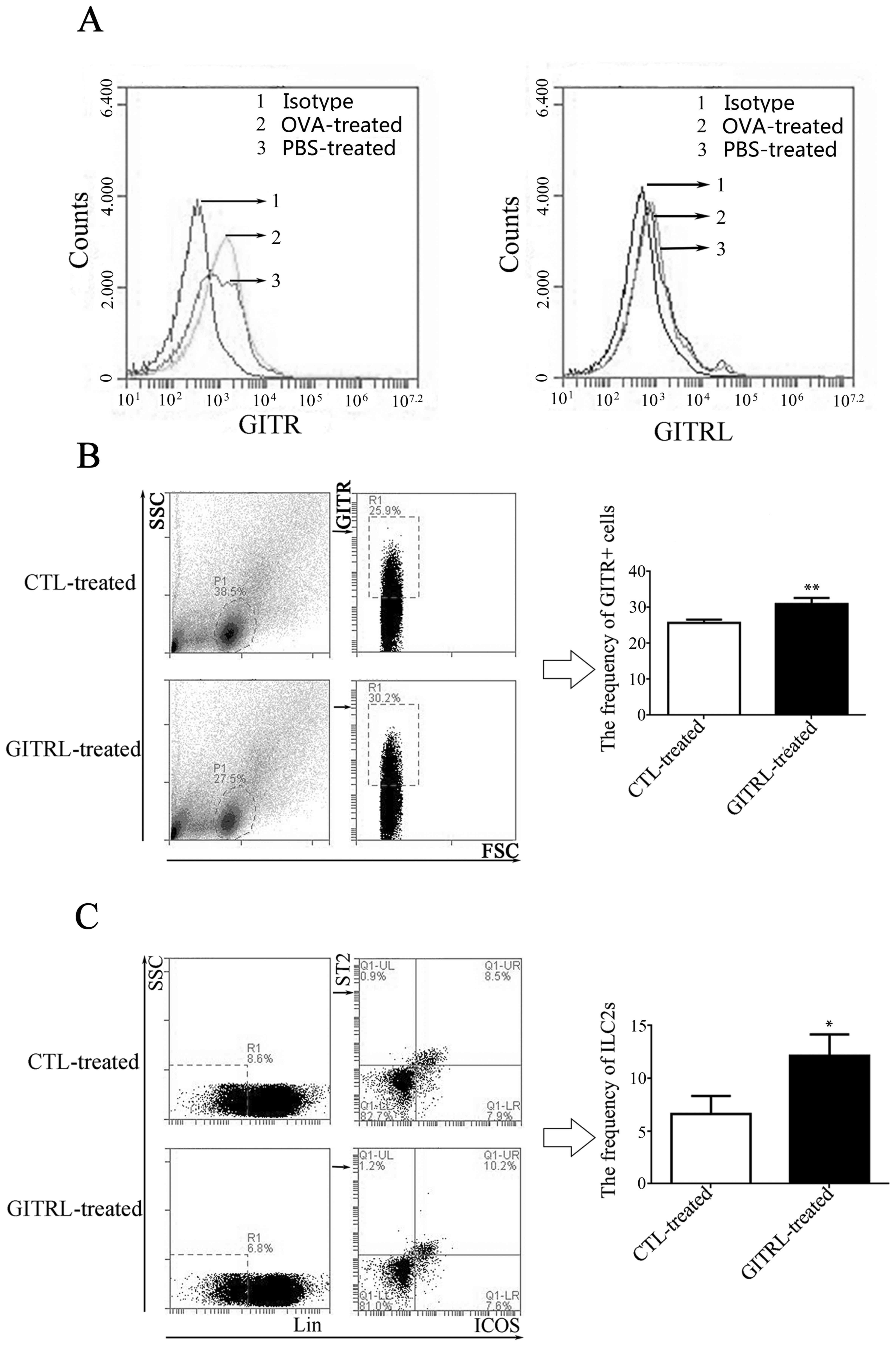|
1
|
Neill DR and McKenzie AN: Nuocytes and
beyond: New insights into helminth expulsion. Trends Parasitol.
27:214–221. 2011. View Article : Google Scholar
|
|
2
|
Neill DR, Wong SH, Bellosi A, Flynn RJ,
Daly M, Langford TK, Bucks C, Kane CM, Fallon PG, Pannell R, et al:
Nuocytes represent a new innate effector leukocyte that mediates
type-2 immunity. Nature. 464:1367–1370. 2010. View Article : Google Scholar :
|
|
3
|
Maazi H, Patel N, Sankaranarayanan I,
Suzuki Y, Rigas D, Soroosh P, Freeman GJ, Sharpe AH and Akbari O:
ICOS:ICOS-ligand interaction is required for type 2 innate lymphoid
cell function, homeostasis, and induction of airway
hyperreactivity. Immunity. 42:538–551. 2015. View Article : Google Scholar :
|
|
4
|
Wong SH, Walker JA, Jolin HE, Drynan LF,
Hams E, Camelo A, Barlow JL, Neill DR, Panova V, Koch U, et al:
Transcription factor RORα is critical for nuocyte development. Nat
Immunol. 13:229–236. 2012. View
Article : Google Scholar :
|
|
5
|
Kearley J, Barker JE, Robinson DS and
Lloyd CM: Resolution of airway inflammation and hyperreactivity
after in vivo transfer of CD4+CD25+ regulatory T cells is
interleukin 10 dependent. J Exp Med. 202:1539–1547. 2005.
View Article : Google Scholar :
|
|
6
|
Jaffar Z, Sivakuru T and Roberts K:
CD4+CD25+ T cells regulate airway eosinophilic inflammation by
modulating the Th2 cell phenotype. J Immunol. 172:3842–3849. 2004.
View Article : Google Scholar
|
|
7
|
Lewkowich IP, Herman NS, Schleifer KW,
Dance MP, Chen BL, Dienger KM, Sproles AA, Shah JS, Köhl J, Belkaid
Y and Wills-Karp M: CD4+CD25+ T cells protect against
experimentally induced asthma and alter pulmonary dendritic cell
phenotype and function. J Exp Med. 202:1549–1561. 2005. View Article : Google Scholar :
|
|
8
|
Placke T, Kopp HG and Salih HR:
Glucocorticoid-induced TNFR-related (GITR) protein and its ligand
in antitumor immunity: Functional role and therapeutic modulation.
Clin Dev Immunol. 2010:2390832010. View Article : Google Scholar :
|
|
9
|
Joetham A, Ohnishi H, Okamoto M, Takeda K,
Schedel M, Domenico J, Dakhama A and Gelfand EW: Loss of T
regulatory cell suppression following signaling through
glucocorticoid-induced tumor necrosis receptor (GITR) is dependent
on c-Jun N-terminal kinase activation. J Biol Chem.
287:17100–17108. 2012. View Article : Google Scholar :
|
|
10
|
Lommatzsch M, Julius P, Kuepper M, Garn H,
Bratke K, Irmscher S, Luttmann W, Renz H, Braun A and Virchow JC:
The course of allergen-induced leukocyte infiltration in human and
experimental asthma. J Allergy Clin Immunol. 118:91–97. 2006.
View Article : Google Scholar
|
|
11
|
Motta AC, Vissers JL, Gras R, VanEsch BC,
Van Oosterhout AJ and Nawijn MC: GITR signaling potentiates airway
hyperresponsiveness by enhancing Th2 cell activity in a mouse model
of asthma. Respir Res. 10:932009. View Article : Google Scholar :
|
|
12
|
Shimizu J, Yamazaki S, Takahashi T, Ishida
Y and Sakaguchi S: Stimulation of CD25(+)CD4(+) regulatory T cells
through GITR breaks immunological self-tolerance. Nat Immunol.
3:135–142. 2002. View
Article : Google Scholar
|
|
13
|
McHugh RS, Whitters MJ, Piccirillo CA,
Young DA, Shevach EM, Collins M and Byrne MC: CD4(+)CD25(+)
immunoregulatory T cells: Gene expression analysis reveals a
functional role for the glucocorticoid-induced TNF receptor.
Immunity. 16:311–323. 2002. View Article : Google Scholar
|
|
14
|
Tone M, Tone Y, Adams E, Yates SF, Frewin
MR, Cobbold SP and Waldmann H: Mouse glucocorticoid-induced tumor
necrosis factor receptor ligand is costimulatory for T cells. Proc
Natl Acad Sci USA. 100:pp. 15059–15064. 2003; View Article : Google Scholar :
|
|
15
|
Yu KY, Kim HS, Song SY, Min SS, Jeong JJ
and Youn BS: Identification of a ligand for glucocorticoid-induced
tumor necrosis factor receptor constitutively expressed in
dendritic cells. Biochem Biophys Res Commun. 310:433–438. 2003.
View Article : Google Scholar
|
|
16
|
Kim JD, Choi BK, Bae JS, Lee UH, Han IS,
Lee HW, Youn BS, Vinay DS and Kwon BS: Cloning and characterization
of GITR ligand. Genes Immun. 4:564–569. 2003. View Article : Google Scholar
|
|
17
|
Ronchetti S, Ricci E, Petrillo MG, Cari L,
Migliorati G, Nocentini G and Riccardi C: Glucocorticoid-induced
tumour necrosis factor receptor-related protein: A key marker of
functional regulatory T cells. J Immunol Res. 2015:1715202015.
View Article : Google Scholar :
|
|
18
|
Kanamaru F, Youngnak P, Hashiguchi M,
Nishioka T, Takahashi T, Sakaguchi S, Ishikawa I and Azuma M:
Costimulation via glucocorticoid-induced TNF receptor in both
conventional and CD25+ regulatory CD4+ T cells. J Immunol.
172:7306–7314. 2004. View Article : Google Scholar
|
|
19
|
Kohm AP, Williams JS and Miller SD:
Cutting edge: Ligation of the glucocorticoid-induced TNF receptor
enhances autoreactive CD4+ T cell activation and experimental
autoimmune encephalomyelitis. J Immunol. 172:4686–4690. 2004.
View Article : Google Scholar
|
|
20
|
Stephens GL, McHugh RS, Whitters MJ, Young
DA, Luxenberg D, Carreno BM, Collins M and Shevach EM: Engagement
of glucocorticoid-induced TNFR family-related receptor on effector
T cells by its ligand mediates resistance to suppression by
CD4+CD25+ T cells. J Immunol. 173:5008–5020. 2004. View Article : Google Scholar
|
|
21
|
Zhan Y, Funda DP, Every AL, Fundova P,
Purton JF, Liddicoat DR, Cole TJ, Godfrey DI, Brady JL, Mannering
SI, et al: TCR-mediated activation promotes GITR upregulation in T
cells and resistance to glucocorticoid-induced death. Int Immunol.
16:1315–1321. 2004. View Article : Google Scholar
|
|
22
|
Wang SY, Yang M, Xu XP, Qiu GF, Ma J, Wang
SJ, Huang XX and Xu HX: Intranasal delivery of T-bet modulates the
profile of helper T cell immune responses in experimental asthma. J
Investig Allergol Clin Immunol. 18:357–365. 2008.
|
|
23
|
He Z, Shotorbani SS, Jiao Z, Su Z, Tong J,
Liu Y, Shen P, Ma J, Gao J, Wang T, et al: HMGB1 promotes the
differentiation of Th17 via up-regulating TLR2 and IL-23 of CD14+
monocytes from patients with rheumatoid arthritis. Scand J Immunol.
76:483–490. 2012. View Article : Google Scholar
|
|
24
|
Livak KJ and Schmittgen TD: Analysis of
relative gene expression data using real-time quantitative PCR and
the 2(−Delta Delta C(T)) Method. Methods. 25:402–408. 2001.
View Article : Google Scholar
|
|
25
|
Zhengjun H, Shengjun W, Yanping Z, Junfeng
B, Jia T, Jie M, Jun C, Changgui S and Huaxi X: Construction of
eukaryotic expression plasmid containing mGITRL gene and its
expression in Lewis cell. J Jiangsu Univ (Medicine Edition).
18:107–110. 2008.
|
|
26
|
Shengjun W, Bin M, Jia T, Huaxi H and
Shengli Y: Cloning and sequence analysis of mouse
glucocorticoid-induced tumor necrosis factor receptor ligand gene.
J Jiangsu Univ (Medicine Edition). 14:97–99. 2004.
|
|
27
|
Martinez-Gonzalez I, Steer CA and Takei F:
Lung ILC2s link innate and adaptive responses in allergic
inflammation. Trends Immunol. 36:189–195. 2015. View Article : Google Scholar
|
|
28
|
Wenzel SE: Asthma: Defining of the
persistent adult phenotypes. Lancet. 368:804–813. 2006. View Article : Google Scholar
|
|
29
|
Ronchetti S, Zollo O, Bruscoli S, Agostini
M, Bianchini R, Nocentini G, Ayroldi E and Riccardi C: GITR, a
member of the TNF receptor superfamily, is costimulatory to mouse T
lymphocyte subpopulations. Eur J Immunol. 34:613–622. 2004.
View Article : Google Scholar
|
|
30
|
Wang S, Shi Y, Yang M, Ma J, Tian J, Chen
J, Mao C, Jiao Z, Ko KH, Baidoo SE, et al: Glucocorticoid-induced
tumor necrosis factor receptor family-related protein exacerbates
collagen-induced arthritis by enhancing the expansion of Th17
cells. Am J Pathol. 180:1059–1067. 2012. View Article : Google Scholar
|
|
31
|
Olsen PC, Kitoko JZ, Ferreira TP,
de-Azevedo CT, Arantes AC and Martins ΜA: Glucocorticoids decrease
Treg cell numbers in lungs of allergic mice. Eur J Pharmacol.
747:52–58. 2015. View Article : Google Scholar
|
|
32
|
Nocentini G and Riccardi C: GITR: A
modulator of immuneresponse and inflammation. Adv Exp Med Biol.
647:156–173. 2009. View Article : Google Scholar
|
|
33
|
Oczypok EA, Milutinovic PS, Alcorn JF,
Khare A, Crum LT, Manni ML, Epperly MW, Pawluk AM, Ray A and Oury
TD: Pulmonary receptor for advanced glycation end-products promotes
asthma pathogenesis through IL-33 and accumulation of group 2
innate lymphoid cells. J Allergy Clin Immunol. 136:747–756. 2015.
View Article : Google Scholar :
|
|
34
|
Halim TY, Steer CA, Mathä L, Gold MJ,
Martinez-Gonzalez I, McNagny KM, McKenzie AN and Takei F: Group 2
innate lymphoid cells are critical for the initiation of adaptive T
helper 2 cell-mediated allergic lung inflammation. Immunity.
40:425–435. 2014. View Article : Google Scholar :
|
|
35
|
Wu Y, Yan Y, Su Z, Bie Q, Wu J, Wang S, Yu
Y, Ding H, Lu P and Xu H: Enhanced circulating ILC2s accompany by
upregulated MDSCs in patients with asthma. Int J Clin Exp Pathol.
8:3568–3579. 2015.
|



